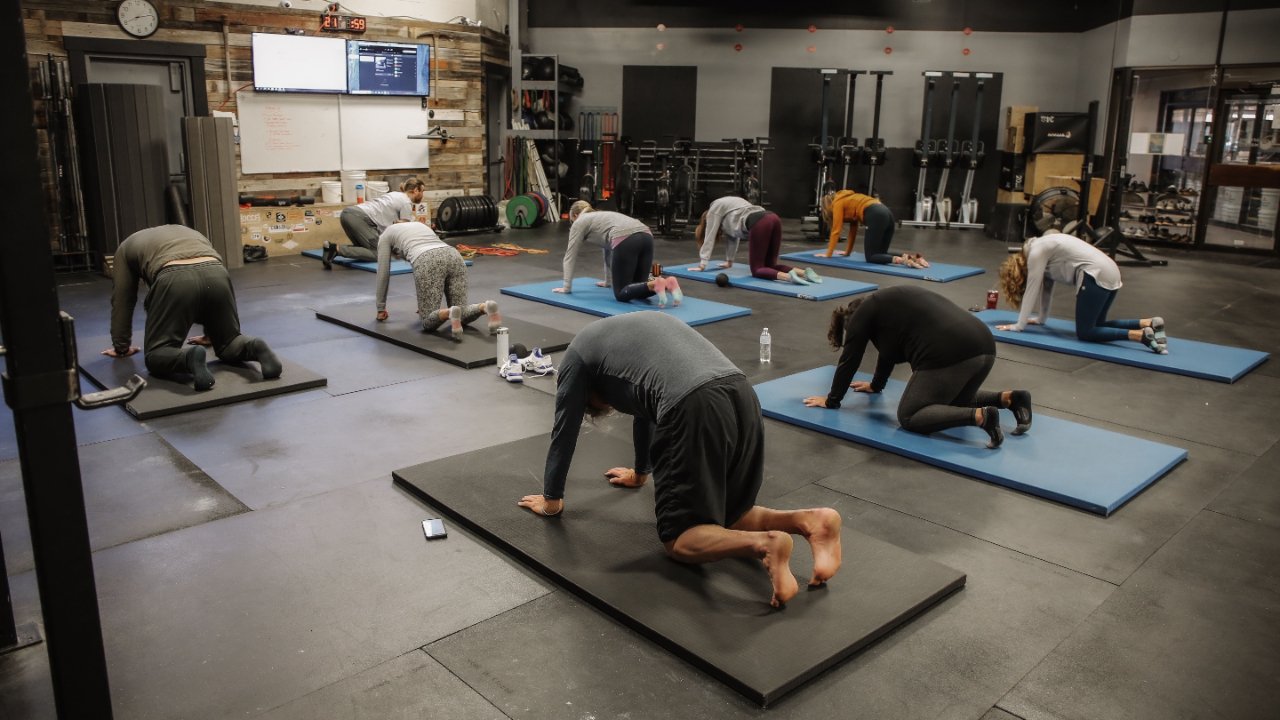Cyclists Need More Mobility, Not Flexibility
Mobility keeps cyclists out of chronic pain, and flexibility doesn’t. The good news: building mobility takes <10 min per day and no equipment.
Give that spine some love
Welcome Bike Utah riders and other cyclists who stumbled upon this blog post. We’re talking about the differences between mobility and flexibility, and why cyclists need mobility to prevent chronic joint pain, especially in their spine.
Let’s define those terms:
Flexibility is the amount of space a joint has to move. To assess flexibility, we look at passive range of motion. Basically, how far will your joint move when someone moves it for you?
Mobility is the amount of control you have over that joint space. To assess mobility, we look at active range of motion. How far can you move a joint with control, without relying on gravity to force motion?
When you fold in half and use the weight of your upper body to force your palms to the ground, that is passive range of motion. Now, imagine sitting with your back against a wall. You lift one leg from the ground towards your face, without bending it or folding your body. The further you go, the more effort it requires. You’ll feel a stretch in the hamstring. Your core muscles will fire up. That is your active range of motion.
Picture a cyclist who has no control over their spine or hips and the surrounding tissue. Pedaling uphill, they can't separate between using their hips and their back, so their back tries to do hip things. As a result, the lower back muscles fatigue and then ache early in their ride. Their hamstrings stretch but don’t know how to fire and, as a result, fail to support the pedal stroke or downhill attack position. Uphill and downhill, the soft tissue in the spine and hips take an absolute beating. Off the bike, these cyclists feel stiff and uncomfortable but don’t know why.
Every week at 100YA, we do joint health assessments for athletes. By and large, cyclists with back pain have poor active range of motion in their spine and hips. It takes about 12 weeks to address that, and then they feel way better.
Our advice to you this off-season: train mobility.
If you want the minimum effective dose, start with the Daily CARs (controlled articular rotations), shown in the video below. It covers every major joint system in your body. Do it at least daily, and you will improve your mobility.
If you struggle with back pain, add this spine mobility routine for mountain bikers. Do it at least three days per week if you’re serious about fixing your back.
Do not do any motion that hurts. If you have an underlying medical condition or significant joint damage, these motions may not be appropriate for you.
If these motions cause pain, and nothing seems to be helping, sign up for a Functional Range Assessment here. We’ll measure your joint health and get you rolling on a personalized mobility program. As with the 100YA bike program, we’ll donate 20% of your coaching subscription to the Bike Utah Mid Week Series.

